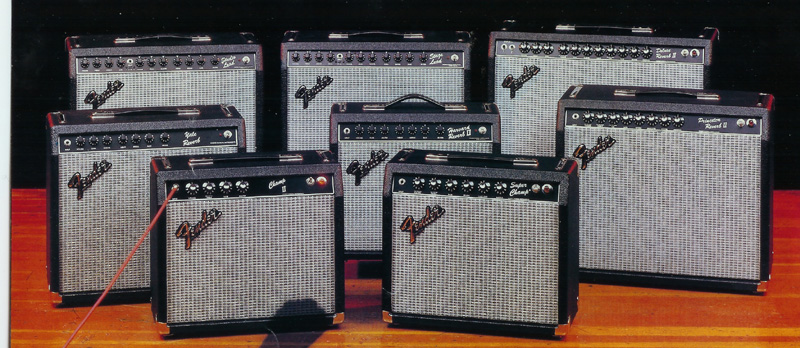v2a
- channel 2
v2b
- channel 1
v3
- reverb driver
v4a
- deliberately overdriven by
v2a to create the overdrive
in channel 2
v4b
is unused
v5a
- groups both channels
together before passing on
to v6 (effects loop)
v5b
- reverb recovery
v6a
- effects send
v6b
- effects return
v7
- phase inverter
v8
and v9 are the push-pull
pair of power tubes, again
common to both channels

